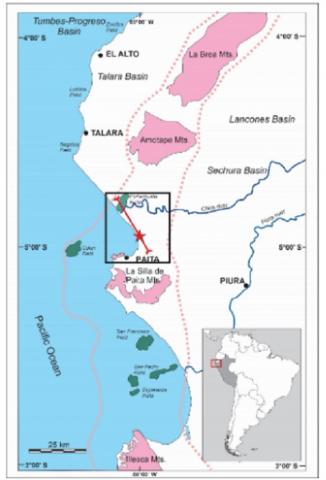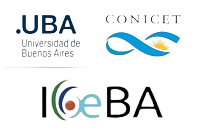Jul Roldán GUEVARA, Eduardo A. ROSSELLO, Sergio Adrián LÓPEZ-ISAZA, Carlos MARISCAL
2 024
Geociências, v. 43, n. 2, p. 281 - 310, 2024
The Amotape Group consists of metasedimentites with varying degrees of metamorphism and Paleozoic intrusions, exposed as isolated blocks that form an NNE-SSW belt, separating the Meso-Cenozoic depocenters of the Talara (west) and Sechura and Tumbes basins (east) along the Pacific margin of NW Peru. We describe three metamorphic/tectonic episodes that produced sub-planar structures (cleavages, fractures) affecting the rocks of the Amotape Group, allowing this unit to be classified as a fractured reservoir. Field survey and multi-scale subsurface data from the Colán Block, evidence a secondary porosity system associated with fracture networks that affect both the basin fill and the basement units. This configures a complementary unconventional exploration target. Sandstone levels in lateral contact with leptometamorphic rocks of the Amotape Group define good reservoir potential due to the preferentially brittle mechanical behavior of the basement, which develops abundant fractures. The porosity values of the Amotape Group range between 4.62% and 1.23%, while permeabilities are on the order of 0.519-0.016 mD. Elevated trapping positions seem to be successfully sealed by Cretaceous units. The reservoir properties define a complementary play concept that could be extended to other positions of the technical basement in the Talara Basin and analogous regions.

